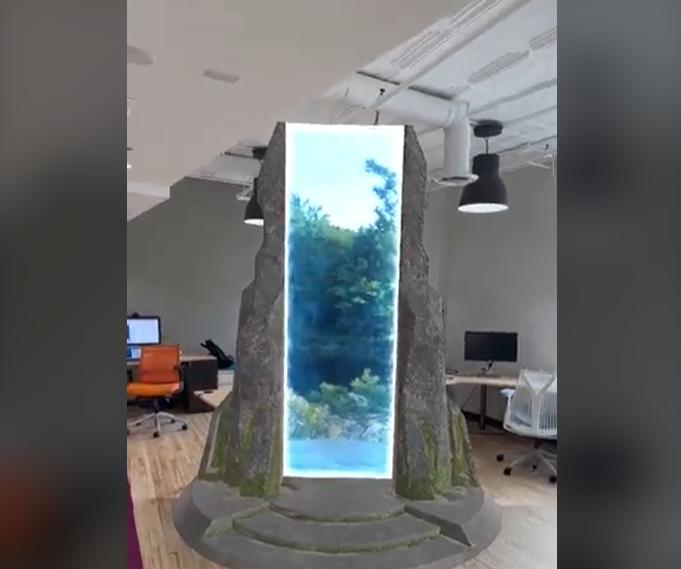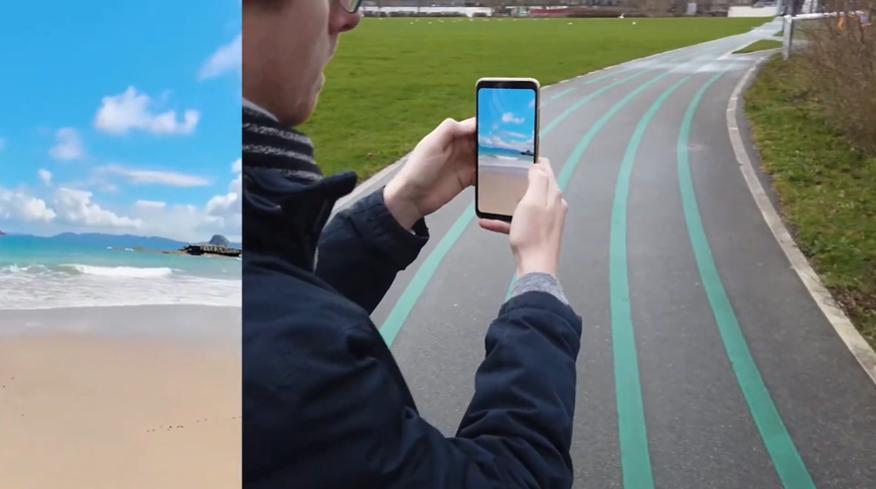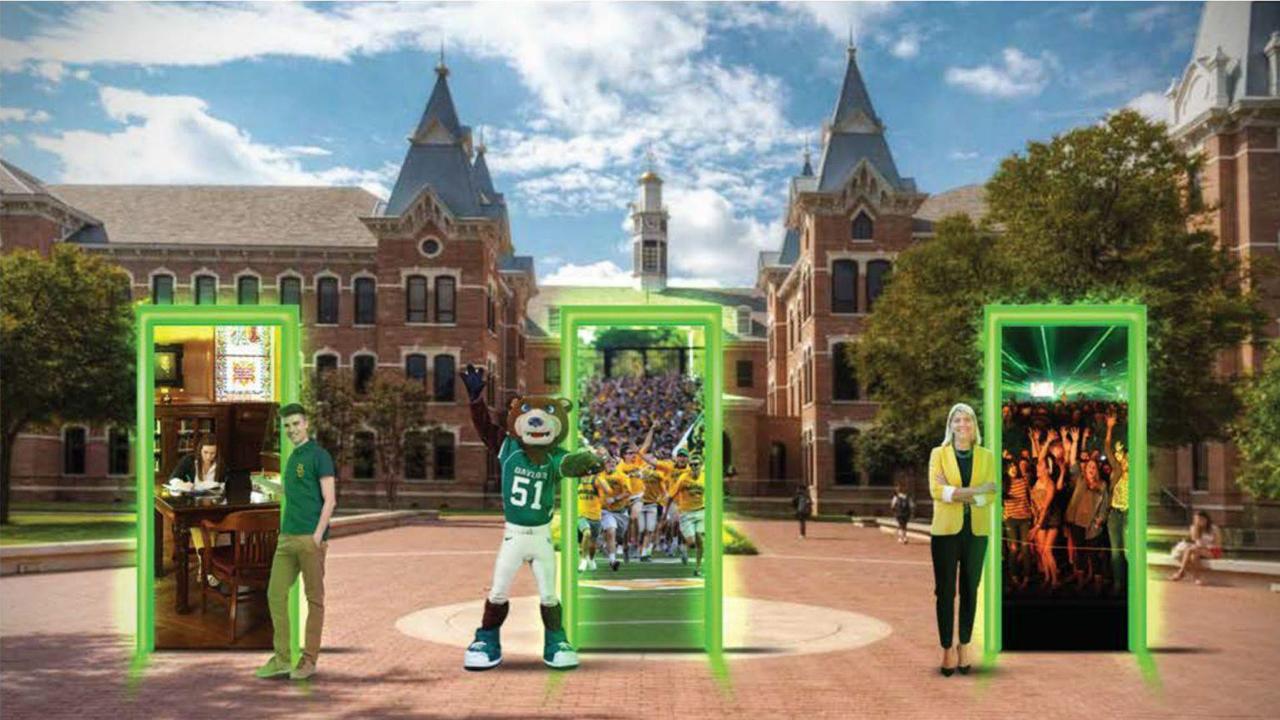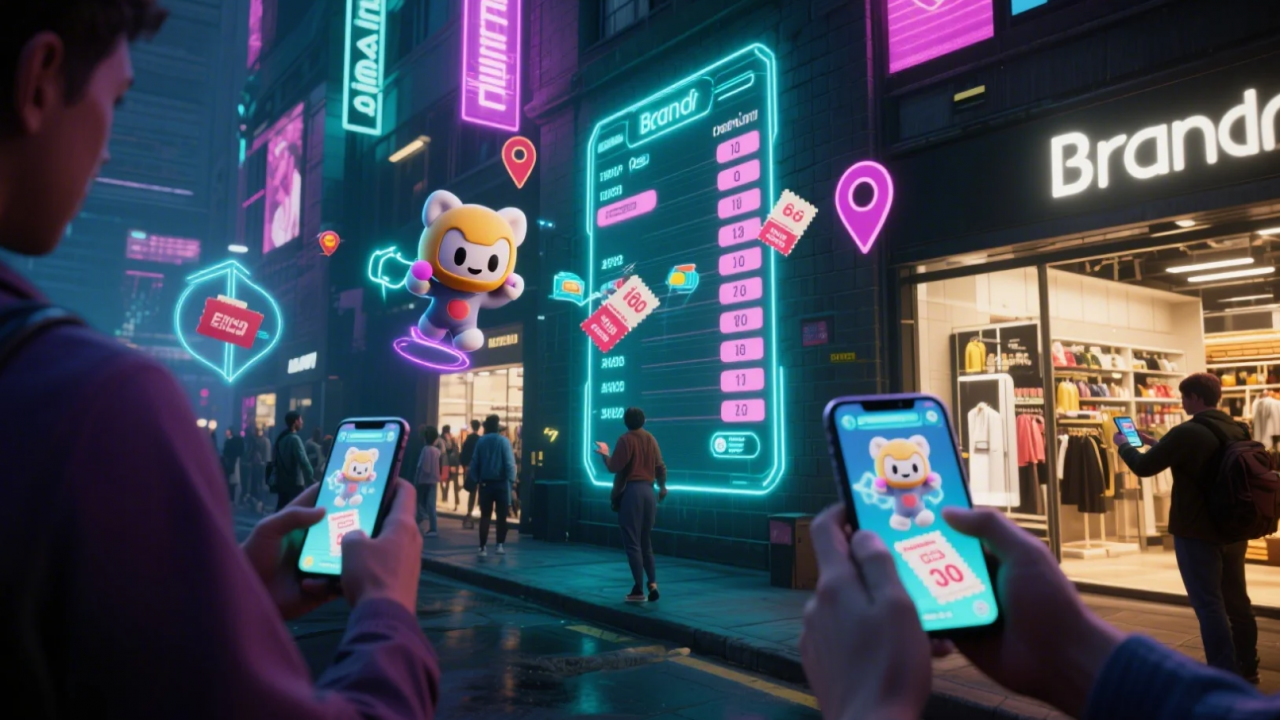What are augmented reality portals?
An augmented reality portal is a virtual world that can be accessed through augmented reality technology. Augmented reality portals function similarly to doors into the virtual world. It allows the users to enter and explore an interactive virtual environment. Through the creation of virtual portals in the real world, users can travel through them and enter new realms. These portals allow the users to visualize 360-degree videos or computer-generated worlds. They can interact and engage with these virtual spaces in real time.

source: Linkedin, Brian Dusselie
Importance and relevance of AR portals in contemporary technology
AR portals are the wave of the future not only for e-commerce but also for other professional sectors like real estate, healthcare, and education. You can find these portals in many settings like Harry Potter (Wizards Unite), ARCore, and, more recently, IKEA. Making their own personalized AR portals gives people and companies the chance to be as innovative as they can be. People can enjoy completely virtual worlds with just a tap on their smartphones.
Hardware and software requirements for AR portals
Key technologies enabling AR portals
Key technologies that enable AR portals include:
ARKit
It is an Apple development tool for making high-end augmented reality apps for iOS. It uses technologies like visual processing and ambient light estimation to overlay digital content into user’s surroundings.
ARCore
It was made by Google and is like ARKit for Android. It enables developers make rich, interactive AR apps for Android devices.
Computer vision, spatial mapping
AR systems use computer vision to analyze real-world images for spatial understanding and accurate virtual graphics overlays. Computer vision algorithms use images from smartphone cameras or special depth sensors on AR headsets to make accurate 3D maps of the surroundings. Simultaneous localization and mapping (SLAM) monitors feature points in the scene to define the its depth, surfaces, and spatial dimensions.
Applications of AR Portals
Entertainment and gaming
AR portals take users to virtual worlds and make their gaming experience better through dynamic and engaging games. AR portals uses many senses in gaming , including visual and aural stimuli. AR portals immerses users in a world where the difference between reality and imagination is not clear. Use of AR portals makes games more immersive, fun and memorable.

source: Linkedin Hugo Boss
Retail and marketing
Augmented reality windows in retail outlets can make window shopping feel like an exciting experience. Since shops often already have marketing materials in their windows, this is a great chance to catch people’s attention and get them interested in what’s inside. The AR window can display a catwalk with models wearing clothes, a scenic portrayal of where the products come from, or any other scene to engage customers and draw them into the store.
For example, IKEA place app allows customers to visualize furniture models in their house before buying. This enhances the customer experiences as they can see the life-sized models of the furniture in their homes and help them make an informed decision. Similarly, Sephore visual artist allows customers to try on make up products virtually. This makes their shopping experience more convenient and enjoyable.
Volvo’s experience with AR through XC90 invites users to experience a virtual journey that blends technology with nature. By scanning an ad on Xiaomi TV, users can embark on an immersive adventure, utilizing SLAM technology to explore serene woods or coastal scenes. This AR experience emphasizes the connection between the luxury and innovation of the XC90 and the natural world, offering a unique way for potential customers to engage with the brand.
Immersive experiences
As the technology continues to grow and become better, people wish to have more realistic and immersive experiences. One easy way to do that is through AR platforms. You don’t need any expensive and heavy headgear with AR portals. All you need to have is a smartphone. For example, there’s a special Stranger Things portal that lets users enter the Byers’ living room and feel completely immersed in the show.
Skincare brand Herborist’s AR experience, titled “Bo-Bo Rabbit,” powered by kivisense, celebrates the Chinese Year of the Rabbit through an AR virtual exploration. Users immerse themselves in a floral wonderland that blends real-world scenes with a first-person exploration of hidden factories, labs, and stores. This AR experience unveils the secrets behind the Tai Chi series’ ingredients, reshaping brand perception and enhancing sales conversions. The campaign creates an enchanting connection between the brand and its audience through innovative technology.
Virtual tourism
The travel sector is already thriving in the AR portal space. Many tourist companies are making their own AR portals, which are like virtual doorways to famous cities and countries. Their goals are to attract visitors, promote tourism, and strengthen their economies. Scotland was one of the first countries to debut a “Portal AR” in 2018. Users can enter this Scottish portal and see 360° videos and graphics, creating a fully realistic experience.

source: youtube, Trida Media
Interactive learning environments
AR portals can be very helpful for making learning more fun and getting students more motivated. AR portals can present study objects as 3D models instead of two-dimensional models to make learning more immersive. This will help students understand their size and features effectively.

source: virtualrealitymarketing.com
Virtual laboratories
Practical experiences are essential to STEM education. However, certain experiments are difficult to carry out in real life settings. The use of augmented reality portals create immersive 3D environments. This helps students understand the complex and hard-to-visualize concepts effectively. These technologies give students a more realistic experience and make it easier for them to interact with simulations.
Benefits of AR Portals
Enhanced user engagement and interactivity
AR portals can be a unique way to promote your business and give people an interesting sneak peek into the 3D worlds of your online stores. Through augmented reality CTAs, people can examine things in life-size and bring them into their own actual world. AR portals are an effective tool to add to 3D virtual shops on screen until AR glasses become more common. They offer full 3D walkarounds and a more interactive shopping experience. This helps to improve user engagement and interactivity.
Accessibility and convenience
AR is portable and accessible to anyone having a smartphone. This makes it ideal for immersive experiences. Anyone can build an AR portal using ARKit and ARCore, or use Google’s Portal Painter. Web based AR portals are a lot more convenient to use than AR apps and does not require you to download and install them.
Innovative ways of storytelling and information dissemination
AR portals can help companies stand out in a sea of flashy marketing techniques. You can use AR portals to show customers what makes you better than others in an innovative way. For example, pharmaceutical companies can use AR portals to show doctors and hospitals how a drug works within the body, explaining how it benefits patients. This will spread the information about the drug in a more engaging and innovative way.
Future Prospects of AR portals
Emerging trends in AR portals
This may sound futuristic, but AR Portal apps enable users to hold up their phone to create a portal into another world and stroll through it. AR portals can bring context to real-world objects and locations, improving education, tourism, and navigation. Businesses can use AR portals to collaborate and communicate remotely in a shared augmented area, which is super convenient.
Potential advancements and their implications
AR technology has the potential to be used in the entertainment sector. AR concerts and events can give people a whole new way to enjoy a show by adding digital material and effects on real-life setting. Moreover, AR portals can be used to make movies and video games that let people actively take part in the story. AR has great potential, and it will be interesting to watch how it will be implemented in future.
Conclusion
The growing popularity of AR portals makes perfect sense. Augmented reality portals allow the users to explore places that could be inaccessible in real life. This shows that AR portals have endless potential to spark the imagination. As it keeps growing, we can expect to see an array of possibilities that push the limits of realism. You can visit Kivisense to try on various augmented reality portal solutions.






